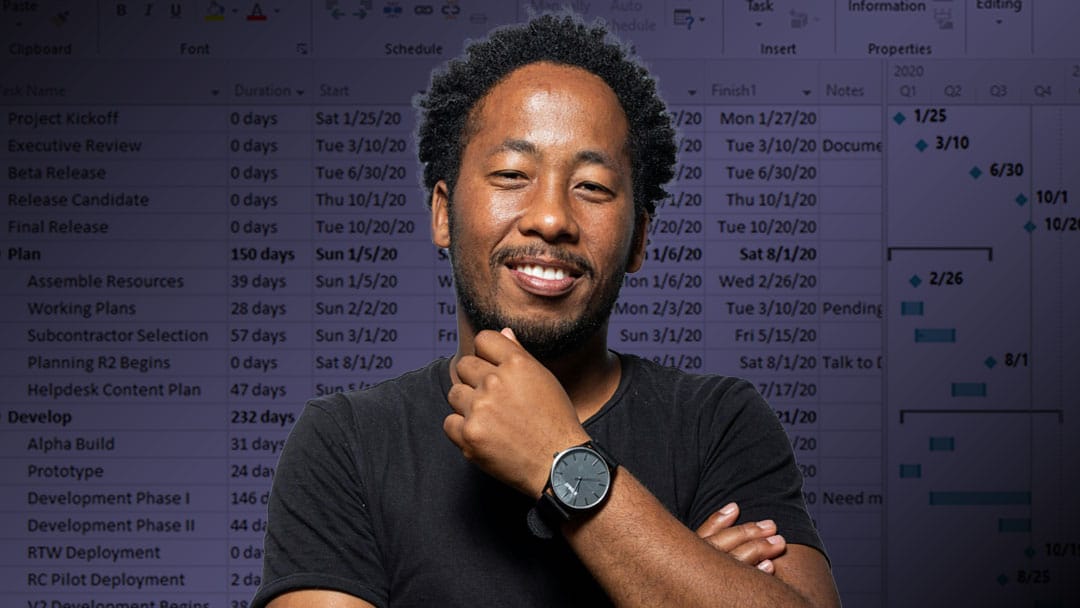Expert Insights:
Dave Fischer
Have questions about the retirement of Project Online? We’ve got answers.
When Microsoft announced they’re retiring Project Online, it raised some urgent questions. We sat down with Dave Fischer for expert advice on next steps.
“If you haven’t already talked with a Microsoft Project expert, now is the time.”
Dave Fischer, Milestone Consulting Group

When Microsoft unexpectedly announced they’ll be retiring Project Online, it raised important questions for many organizations. Project Online has been critical to project and portfolio management for years and its loss is causing a fair level of concern.
Fortunately, there are options available.
We sat down with Dave Fischer, CEO of Milestone Consulting Group and a global expert on Microsoft Project, to get some answers to the questions and concerns he’s hearing from PPM professionals.
I know you’re busy talking to many organizations right now about Microsoft’s announcement and what it means for them. Can you start by explaining what exactly this news means?
Absolutely. Basically, if your organization uses Microsoft Project to schedule and manage complex projects and you’re using Project Online for your enterprise-wide collaboration on those projects, you’ll need to migrate to a different Project Portfolio Management solution before September 2026.
And, to be clear, Microsoft Project is not going away—only Project Online, which is the tool that lets all the contributors and stakeholders do things like update their timesheets, see their tasks, update the status of their tasks, view status reports, that kind of thing.
Is this announcement something you were expecting?
No. This was a shocking bit of news from Microsoft—no one saw this coming with this kind of timing. Many of our clients migrated to Project Online from previous versions of Project Server (2002, 2003, 2007, 2010, 2013, etc.) and so have been relying on this solution for decades. This announcement is causing a fair amount of concern and angst.
The good news is, we have a year to make this migration happen, and you have some good options to keep you moving.
What solutions are you recommending for replacing Project Online?
The most seamless solution will be to convert to Project Server, which is virtually identical to Project Online. The difference is that instead of Microsoft hosting everything for you, you’ll need to manage your own hosting, either through a physical server infrastructure or a cloud service, like Microsoft Azure or AWS. As with all things Microsoft, licensing for Project Server can be confusing and there is some conflicting information out there. Make sure your consulting partner can help you navigate the intricacies involved.
“For enterprise teams that are managing highly complex projects, Planner just isn’t sufficient.”
I see that Microsoft is advising people to switch to Microsoft Planner. Are you recommending this to your clients?
I get this question a lot, and the short answer is, if you’re handling complex projects and you’re a large organization, no—and here’s why: For enterprise teams that are managing highly complex projects, Planner just isn’t sufficient. Microsoft has repeatedly stated that its long-term goals for Planner do not include robust PPM features and functionality. They are building Planner as a solution for work management and collaboration, intended to compete with solutions like Smartsheet and Asana. It’s fine for simple task management and team collaboration, but if you need advanced project scheduling, resource management, timesheets, portfolio-level reporting, and portfolio prioritization, selection, and optimization, it’s not going to be robust enough for your needs.
We’ve looked at this extensively with our clients, and Planner is just not an enterprise-level project portfolio management solution. Virtually every client we work with would have to give up significant functionality if they tried to move to Planner, which defeats the purpose of having a robust project portfolio management solution.
When Microsoft turns off Project Online on September 30, 2026, what will happen?
This is one thing I’m really concerned about, and it’s why we’re working so hard to get the word out. The reality is, if you haven’t moved your data out of Project Online by that date, you will lose it. On October 1, 2026, it will be completely gone. It’s very important that companies work on this transition now, so you don’t lose any of your critical data and information.
“It’s very important that companies work on this transition now, so you don’t lose any of your critical data and information.”
That sounds serious. Should companies be in crisis mode here?
No. We’re telling all of our clients to take this seriously, but not to panic. If you’ve got a skilled consulting partner helping you through this, you’re going to be just fine. At Milestone, we’re working closely with all of our existing clients, and we’re also getting calls from other organizations that need support right now. As long as you’re talking to Microsoft Project experts who understand both the technical requirements and the business implications of this transition, you’re in good hands.
Of course, I would be remiss if I didn’t say that our team at Milestone is the best hands to be in. No one knows Microsoft Project better than us. So if you don’t have a partner, or if your partner is trying to shoehorn you into a solution that doesn’t meet all of your needs, we’re here to help.
How are people responding to this news so far?
We’ve had several meetings with clients about this transition, and they’re going well. Generally, our clients aren’t panicking once they understand their options and have a clear migration plan. With good planning and expert guidance, this doesn’t have to be disruptive.
On the flip side, many of our clients at Milestone—and doubtless many more organizations—do not have budgets that will cover the migration and licensing costs involved with switching to a new platform, especially in the short window of time Microsoft has imposed. September 30th, 2026 is just 11 months from now. Our team is supporting clients with this challenging process in any way we can.
“I would be remiss if I didn’t say that our team at Milestone is the best hands to be in. No one knows Microsoft Project better than us.”
So what should organizations be doing right now?
My advice is to have a conversation this month with your Microsoft Project partner, so you can sketch out the plan for your next year. If you’ve got a large and layered organization, with complex projects, this transition might require the full 11 months ahead, so be sure to start talking it through with some experts right away to better understand the effort and costs associated with this.
The key is to assess how your organization currently uses Project Online, what infrastructure options you have, and what kind of budget might be required. We’re helping our clients navigate both the technical and business sides of this migration, and I recommend working with someone who understands both sides of this equation.




